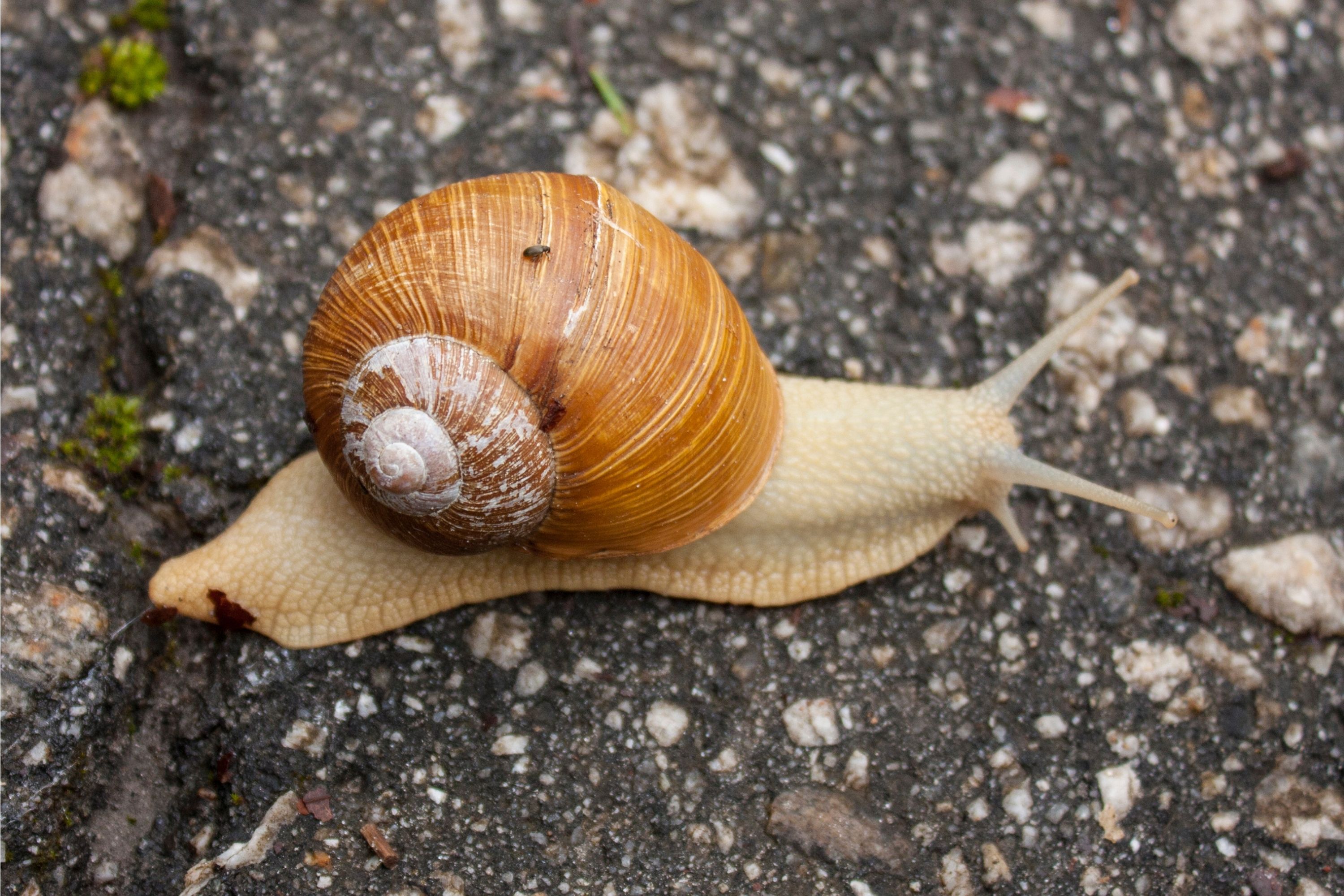Turkish snail
(Helix lucorum)

Description
Helix lucorum is a species of large, edible, air-breathing land snail, a terrestrial pulmonate gastropod mollusk in the family Helicidae, the typical snails. Adult snails weigh about 20-25 g. The width of the shell is 35-60 mm. The height of the shell is 25–45 mm. This species of snail makes and uses love darts. The native distribution is the Caucasus, Anatolia and, arguably, the Balkans. It has also invaded many other regions since ancient times, likely assisted by humans. Helix is a genus of large, air-breathing land snails native to Europe and the Mediterranean region. They are the type genus of the family Helicidae, and are among the first animal genera described by Carl Linnaeus. Members of the genus first appeared during the Oligocene. Like most land snails, Helix species are hermaphroditic, and like other helicids, a courting pair will impale each other with hormone-rich love darts prior to exchanging sperm. Well-known species include Helix pomatia (Roman snail, Burgundy snail, or edible snail) and Helix lucorum (Turkish snail). Cornu aspersum (garden snail) – another well-known helicid – was originally described as a member of Helix (as "Helix aspersa"), but the prevailing classification places it as the sole member of the sister genus Cornu. Helix snails have been harvested for human consumption since prehistoric times. In the common era, members of the genus (particularly H. pomatia) are farmed throughout the world for the dish escargot, an hors d'oeuvre. The establishment of snail farms outside of Europe has introduced several species to North America, South America, and Africa, where some escapees have established themselves as invasive species. Some taxonomists remove the species "Helix aperta", "Helix aspersa", and "Helix mazzullii" from the genus Helix and place them in their own monotypic genera as Cantareus apertus, Cornu aspersum, and Cantareus mazzullii. At the beginning in the mid-1700s, the generic name Helix had been used for almost all terrestrial gastropods; later this was restricted to species with helicoid habitus, including zonitids and other groups. In the course of the 1800s, more groups were removed, but prior to 1900, several thousand helicid and hygromiid species of Europe and abroad had still been classified in the genus Helix. By the early 1900s, the genus was split into many separate genera, leaving only some 30 species closely related to its type species Helix pomatia in the genus.
Taxonomic tree:







